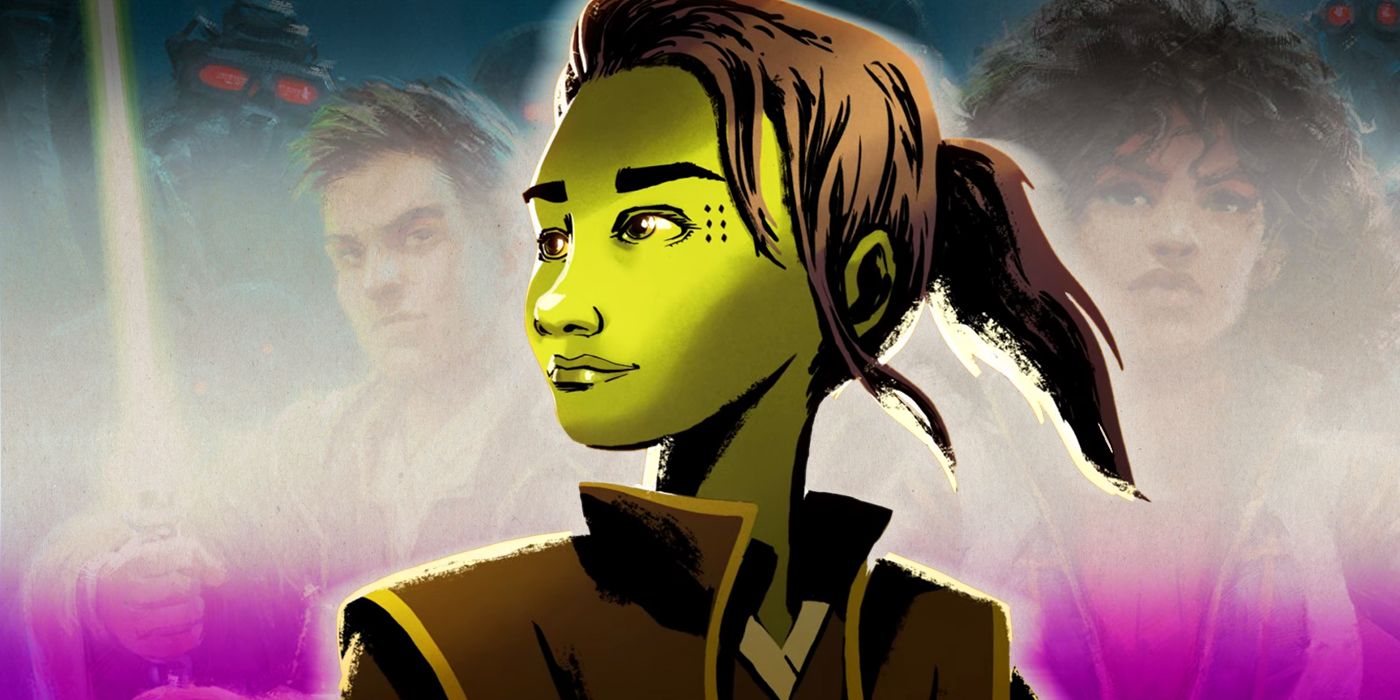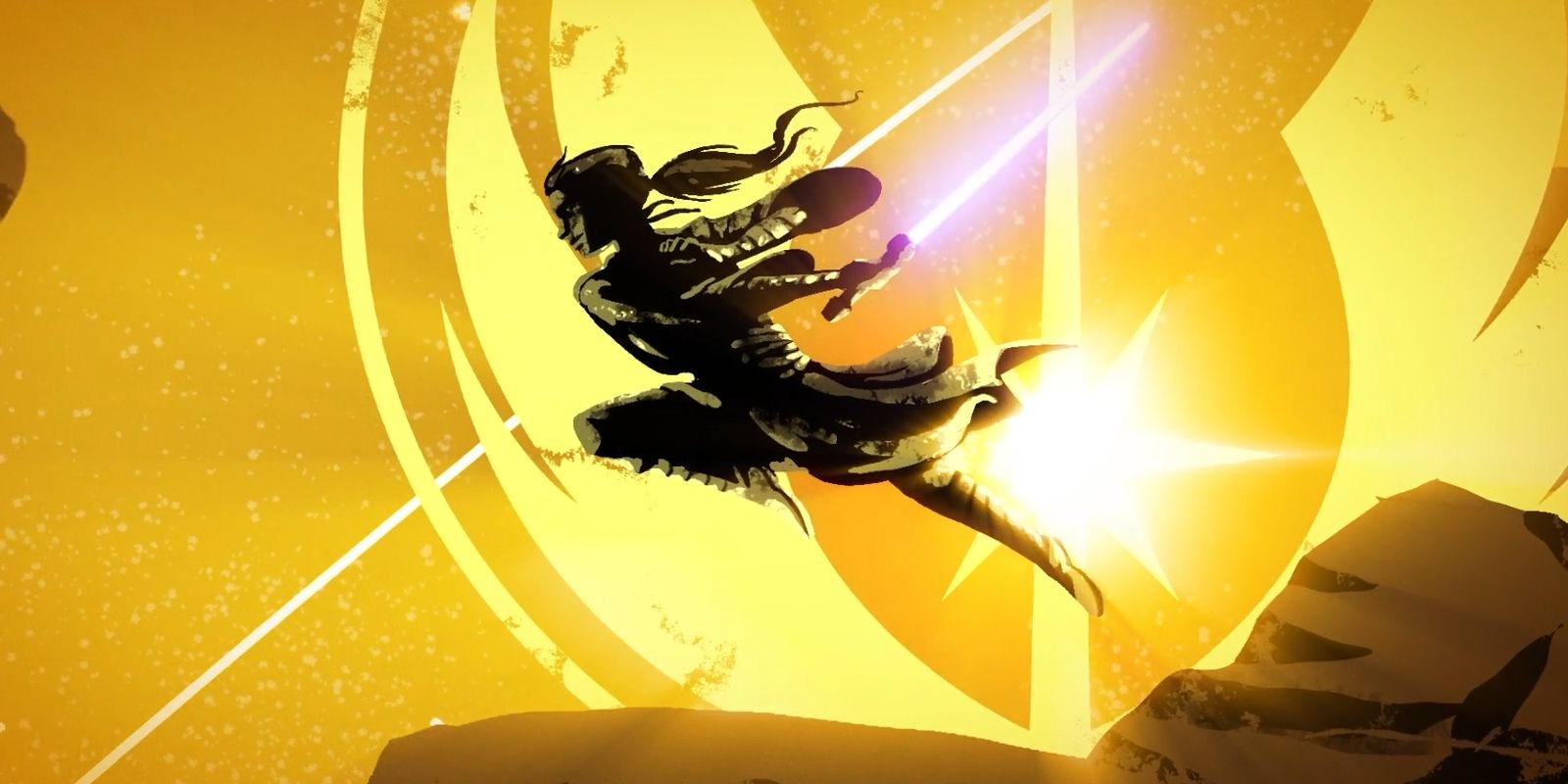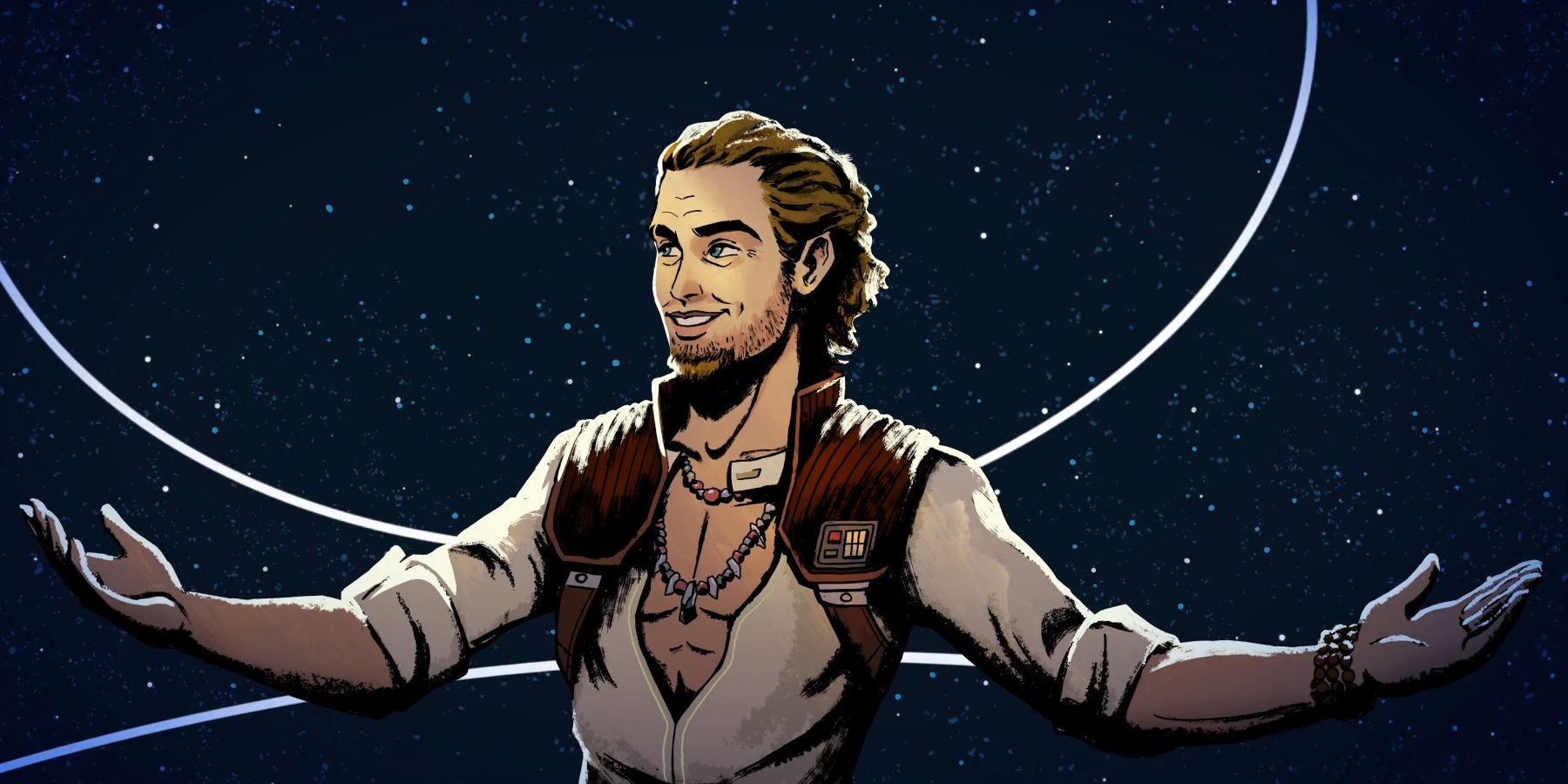
WARNING: The following contains spoilers for Star Wars: The High Republic: Out of the Shadows by Justina Ireland, on sale now.
One of the core tenets of the Star Wars: The High Republic subseries is a commitment to diversity. In Justina Ireland’s Star Wars: The High Republic: Out of the Shadows, Vernestra Rwoh reflects on other Padawan and Jedi’s relationships and pretty clearly reveals that she herself is asexual and aromantic, furthering representation in the Star Wars universe in the process.

In the novel, Vernestra's identity is revealed after she and her Padawan, Imri Cantaros, see the reunion between Sylvestri Yarrow and Jordanna Sparkburn, two women who were in a relationship in the past and clearly still have feelings for each other. Imri, who has a strong Force empathy ability, is distressed by Syl and Jordanna's mutual heartbreak, in part because he still struggles with separating other people's emotions from his own. Vernestra tries to comfort Imri, but she reflects, "This was a difficult conversation for her because she'd never once had any of those feelings, regardless of the people she met. She could tell when someone was attractive, and there were people she liked more than others, but she had never felt the push/pull of attraction so many other Padawans did when they came of age." With this reflection, Vernestra confirms that she identifies as aroace, another word for asexual and aromantic.
Responding to a question on Twitter about how Vernestra identifies, Justina Ireland confirmed Vernestra's asexuality and aromanticism. "Vernestra is asexual and aromantic," Ireland wrote. "She just doesn't experience physical attraction nor does she seek a romantic connection." Ireland's reponse here is important because she makes sure not to conflate asexuality and aromanticism. While many people, like Vernestra, are aroace, both asexuality and aromanticism are a spectrum, and many people identify as one or the other rather than both identities.
Ireland further elaborated Vernestra's identity "does not mean that she's an emotionless droid! As we see in Out of the Shadows, she values her friendships deeply." With this statement, Ireland is confronting a common misconception about people on the asexuality and aromantic spectrum that their identity means that they feel less or care less about the people around them, and she continues to confront that misconception through her characterization of Vernestra.
Most Jedi are expected to avoid romantic attachments because the Order feels that these attachments can be dangerous, and Jedi in general are expected to be mostly celibate. However, Vernestra's aroace identity draws a distinction between the choice of celibacy and the aroace identity. Vernestra further reflects that she believes her aroace identity may have made it easier for her "but that did not mean Imri's path would be as smooth." Throughout the novel, Vernestra clearly shows how much she cares about Imri, and she constantly is worrying and trying to make sure that she is doing the best she can to help guide him in the Force.

Imri himself later states that he has no plans to ever begin a romantic relationship. He says, "I'm not about to run out and break any hearts. It's hard enough cutting myself off from the feelings of strangers. I can't even imagine a romantic partner." Therefore, even if Imri does feel attraction, he chooses not to act on it because of his Force empathy. In Vernestra's case, her asexuality and aromanticism are not choices, but they are instead a fundamental part of who she is.
Vernestra is not the first asexual character in the Star Wars universe -- or even in the Star Wars: The High Republic subseries. Vi Moradi from the Star Wars: Galaxy's Edge theme park was confirmed as asexual in Delilah S. Dawson’s Star Wars: Galaxy’s Edge: Black Spire. Leox Gyasi from the Star Wars: The High Republic also has been confirmed to be asexual as well, though whether he is aromantic as well is still unclear. Asexuality and aromanticism are vastly underrepresented in media as a whole, so Vernestra is an important addition to the franchise as well.
The inclusion of both Leox and Vernestra in the Star Wars: The High Republic allows the authors to show that asexuality is not a monolithic identity. Vernestra and Leox both care deeply about their friendships and their chosen families, but they are vastly different characters. Vernestra is a prodigy driven to become the best Jedi that she can be, but she also prefers tackling problems head on rather than spending time thinking deeply about the mysteries of the universe.
In contrast, as seen in his introduction in Claudia Gray's Star Wars: The High Republic: Into the Dark, Leox is far more laid back. He also enjoys thinking deeply about "'the deeper spiritual dimensions of the cosmos,'" often with the aid of spice. On a more lighthearted note, Leox is an expert pilot, and a running joke of the subseries is that Vernestra tends to crash any vehicle that she drives, luckily without any casualities thus far. Thus, through their characters, the subseries shows that not all asexual people are alike, and while Leox and Vernestra's asexual and aroace identities, respectively, are an important part of who they are, they still are only part of their personalities.
Therefore, the confirmation of Vernestra's aroace identity is an important step forward for the franchise. By including multiple characters on the asexual and aromantic spectrums, the authors of the Star Wars: The High Republic avoid tokenization and allow more nuance to their characterizations. This inclusivity and nuance will increase as more character on these spectrums are introduced within a galaxy far, far away.
0 Comments